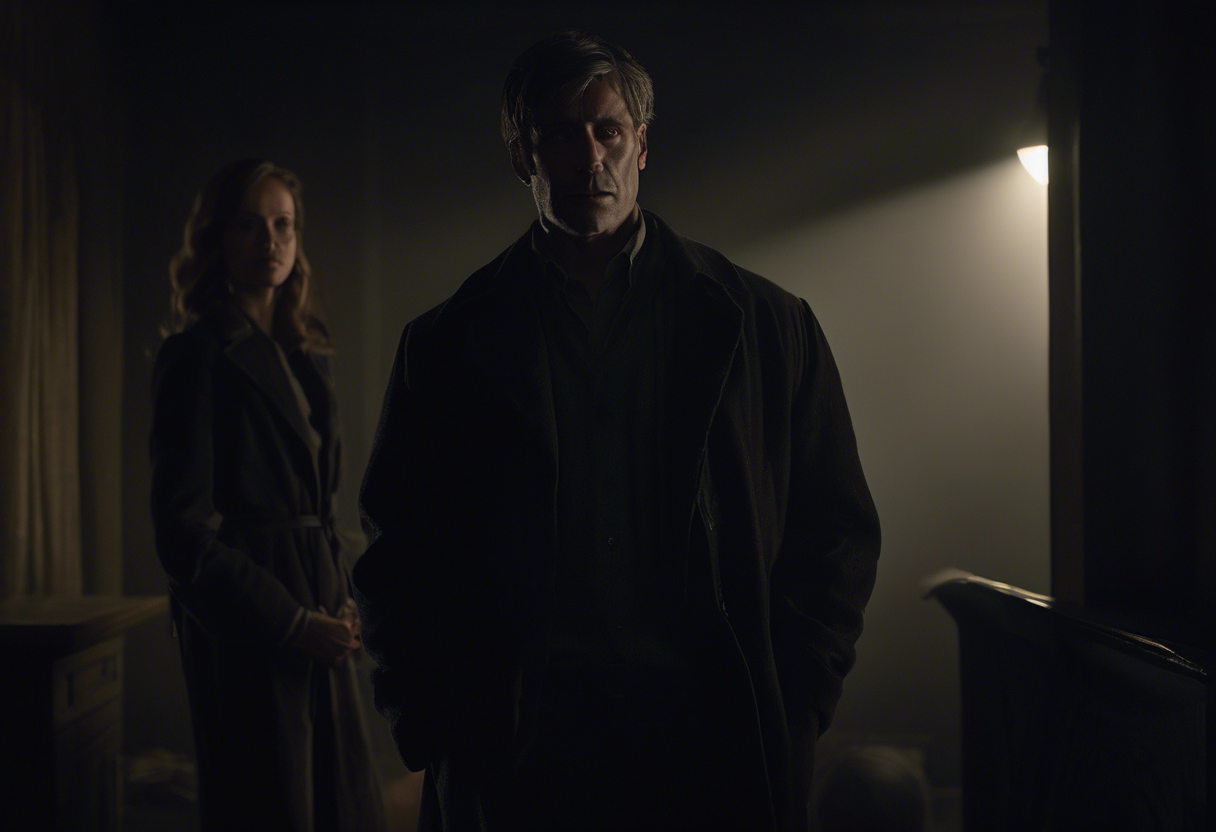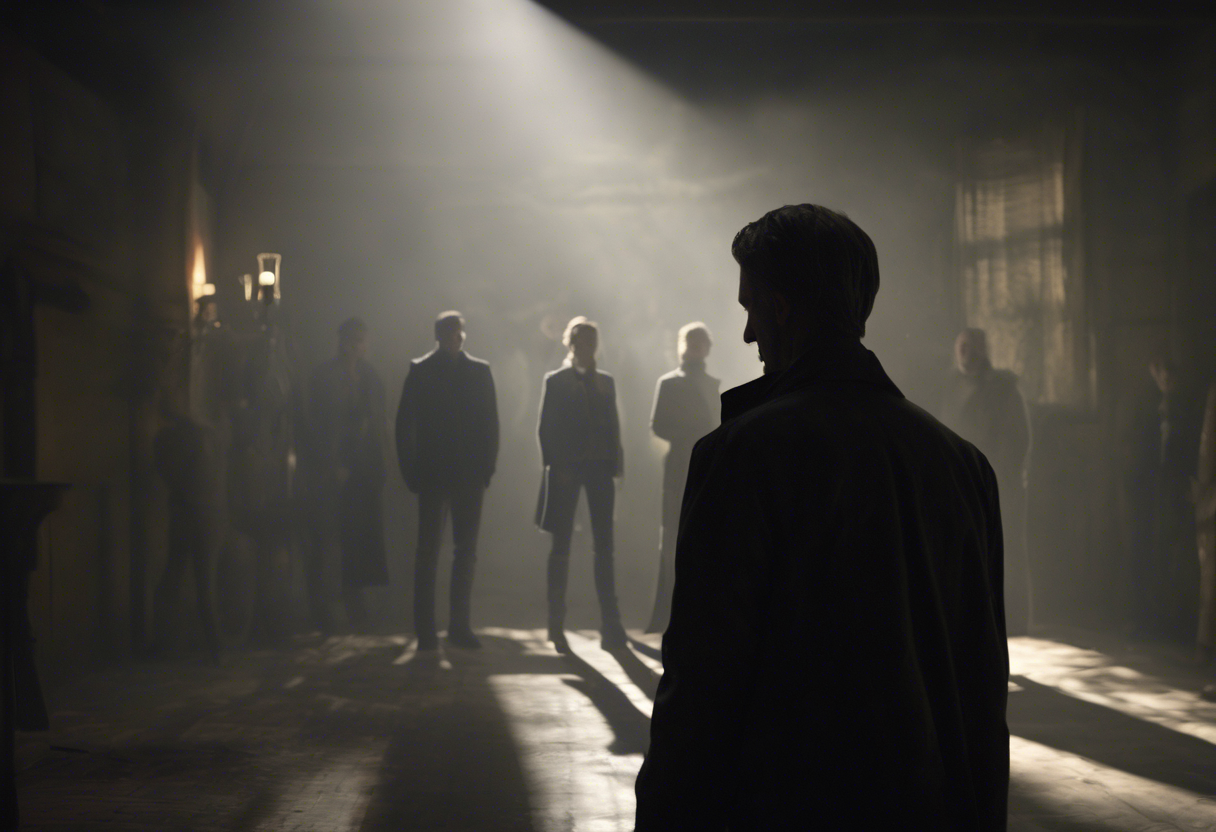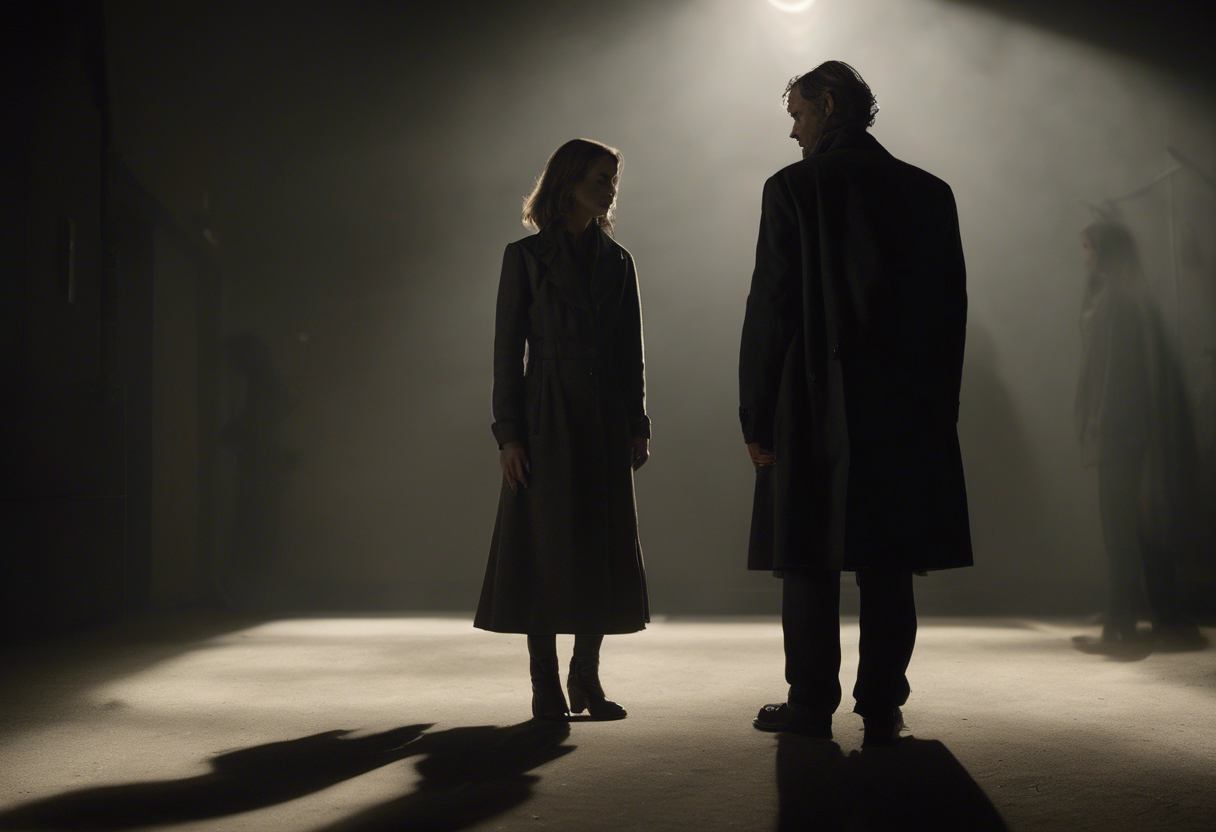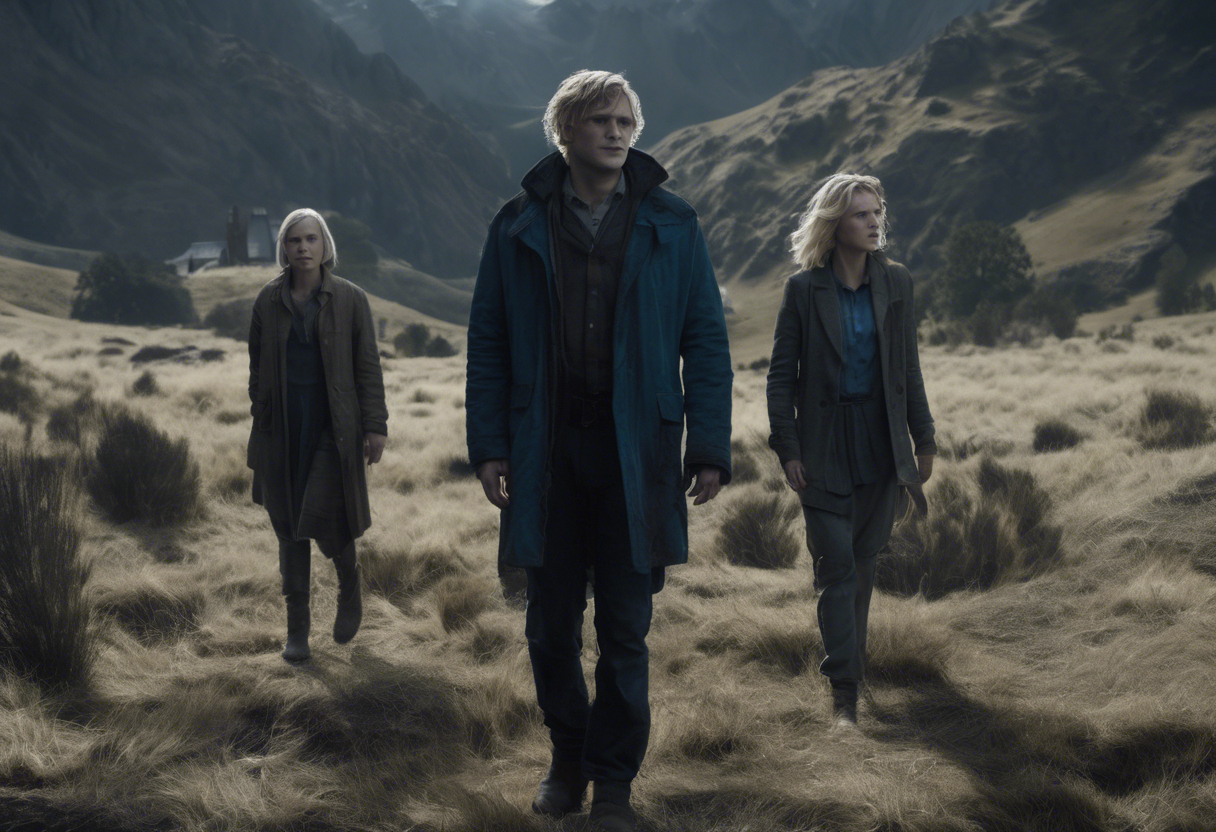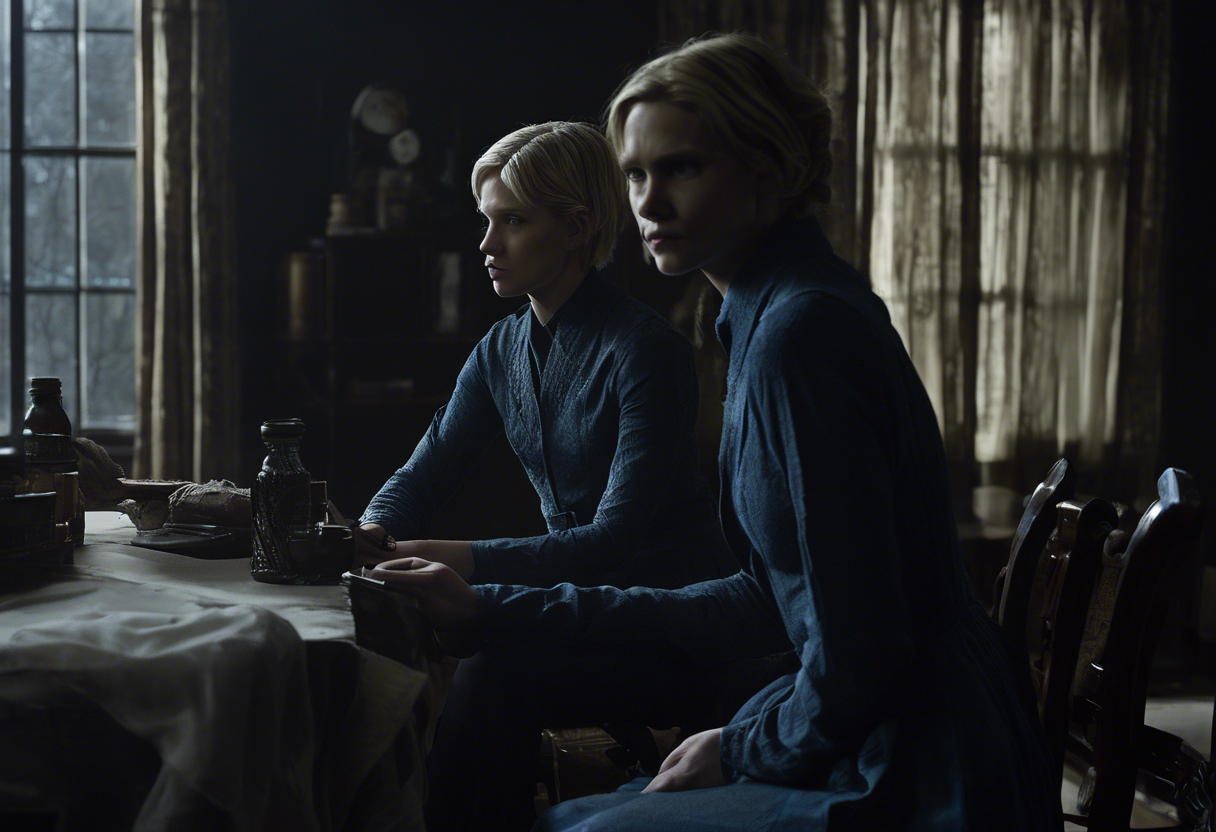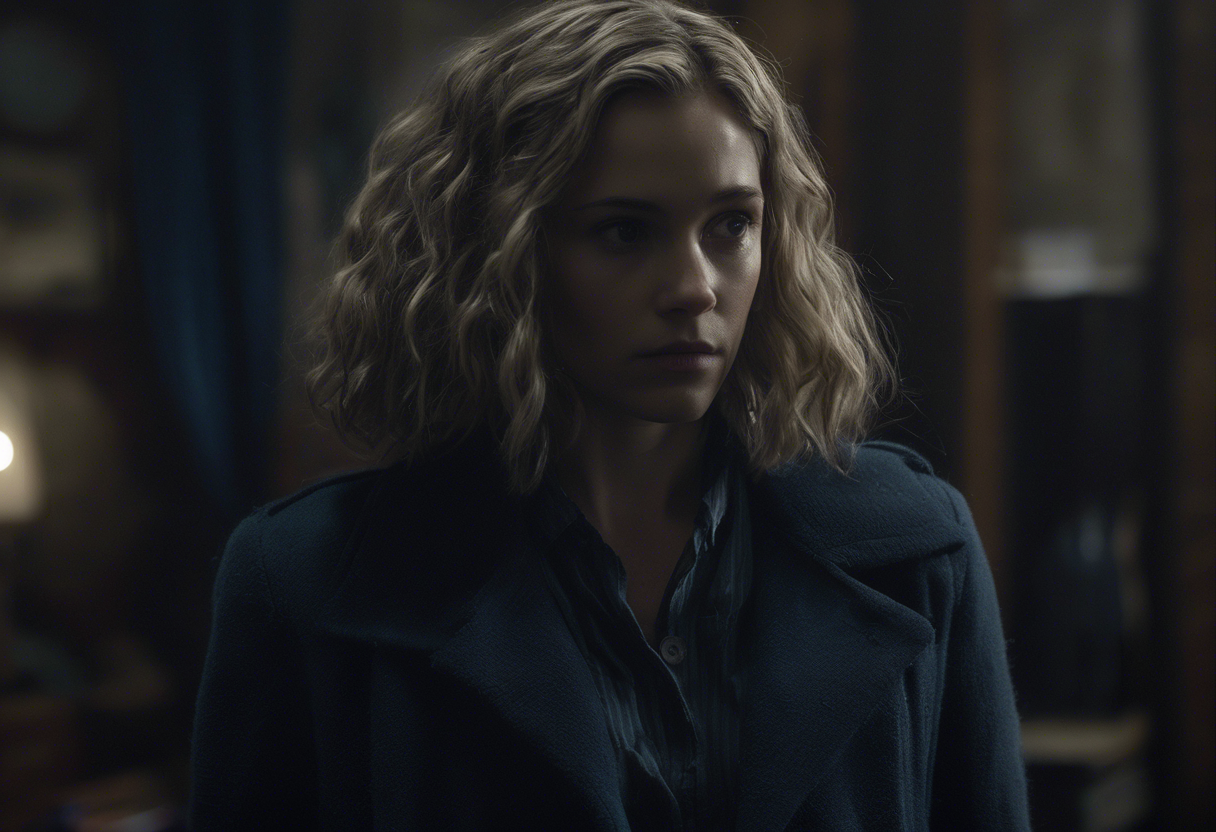Contents
Dark Season 3: Episode 6 – Light and Shadow
Introduction
"Dark," the German science fiction thriller television series created by Baran bo Odar and Jantje Friese, has garnered significant attention for its complex narrative, intricate character development, and profound exploration of themes such as time, identity, and the consequences of human actions. The series, which ran for three seasons from 2017 to 2020, is notable for its non-linear storytelling and the interweaving of multiple timelines and realities.
"Dark Season 3: Episode 6 – Light and Shadow" is a pivotal episode in the final season of the series, which introduces a storyline based in 1888 and explores a parallel reality featuring alternate versions of many main characters [1][3]. This episode, like the rest of the series, is a product of the creative vision of Odar and Friese, who are known for their meticulous attention to detail and their ability to craft compelling, layered narratives.
Plot Summary
The episode "Light and Shadow" opens with a haunting replay of the apocalypse that has become a recurring motif throughout the series. In a bird’s eye view of Winden, the black blob, a symbol of the catastrophic event that has ravaged the town, appears and covers the entire power plant. This visual sets the tone for the rest of the episode, which delves deep into the complexities of time travel, the consequences of altering the timeline, and the emotional toll on the characters.
The scene shifts to the Kahnwald house, where Jonas, a central character whose journey is deeply intertwined with the fate of Winden, promises to the original Martha (often referred to as OG Martha) that he will make things right. This promise is laced with a sense of desperation and hopelessness, as Jonas is well aware of the cyclical nature of the events unfolding in Winden. His tears and snot reflect the emotional burden he carries, a burden that has been accumulating over the course of the series.
The narrative then cuts to Martha and Bartosz, who are engaged in a conversation that highlights the confusion and complexity of the multiple timelines. Bartosz muses about Jonas, questioning whether he is dead and if Martha was the one who killed him. However, Martha clarifies that it was not her but another Martha from a different reality who was involved in Jonas’s demise. This exchange underscores the show’s exploration of identity and the blurring of lines between different versions of the same characters.
Martha attempts to steer the conversation away from Jonas and towards the more immediate concern of stopping Aleksander from opening the barrels at the power plant. This plot thread is crucial as it ties into the larger narrative of preventing the apocalypse. Bartosz tries to call Aleksander but is unable to reach him, as Aleksander is preoccupied with other critical tasks. Instead, Bartosz contacts Charlotte, asking her to come to the power plant, which sets in motion a chain of events that will have significant repercussions.
Meanwhile, The Unknown, a mysterious figure central to the series’s mythology, is seen observing the pulsing, unstable god particle. The Unknown’s actions are deliberate and calculated, reflecting a deeper understanding of the underlying forces at play in Winden. By pulling a lever, The Unknown stabilizes the particle, causing it to form a perfect sphere. This act is symbolic of the control and manipulation that The Unknown exerts over the events in Winden.
The younger and older versions of The Unknown then approach the sphere and disappear, further emphasizing the fluidity of time and the interconnectedness of different timelines. The middle-aged Unknown pulls out his own golden sphere, similar to the one possessed by alt-Martha, highlighting the symmetry and balance that exist within the complex web of time.
As the episode progresses, the characters navigate through their respective timelines, each facing unique challenges and making decisions that impact the overall narrative. The Kahnwald family, particularly Claudia and Egon, are shown dealing with their own personal struggles and the weight of their responsibilities within the larger story. The Tiedemann family, with their dark secrets and tragic history, also play a crucial role in this episode, as their actions contribute to the unfolding drama.
The power plant, a central location throughout the series, becomes a focal point once again. Here, characters from different timelines converge, each with their own agendas and motivations. The tension builds as they work towards preventing or causing the apocalypse, depending on their roles within the narrative.
Throughout the episode, the cinematography and direction by Baran bo Odar are noteworthy. The use of dark colors and the eerie atmosphere create a sense of foreboding, underscoring the gravity of the events unfolding. The score, often minimalist but powerful, adds to the tension and emotional depth of the scenes.
As the episode reaches its climax, the characters face moments of truth and confrontation. The relationships between them are tested, and the consequences of their actions become clear. The episode ends on a note of resolution but also sets the stage for the final episodes of the series, leaving viewers with a sense of anticipation and curiosity about the ultimate fate of Winden and its inhabitants.
Themes and Symbolism
"Light and Shadow" is replete with themes and symbolic elements that are characteristic of the "Dark" series. One of the primary themes is the concept of time and its cyclical nature. The episode reinforces the idea that events in Winden are part of a larger loop, where actions in one timeline have repercussions in others. This theme is symbolized through the use of the black blob and the god particle, which represent the destructive and stabilizing forces at play.
Identity is another significant theme, as the episode explores the multiple versions of characters and the blurring of lines between them. This is particularly evident in the conversations between Martha and Bartosz, where they grapple with the different realities and the actions of their alternate selves.
The power plant serves as a symbolic location, representing both the source of the apocalypse and the potential for salvation. The barrels and the god particle are symbols of the scientific and mystical forces that are beyond human control but are manipulated by characters like The Unknown.
The use of light and shadow is also symbolic, reflecting the dual nature of the characters and the events they are involved in. Light often represents hope and clarity, while shadow symbolizes darkness and uncertainty. This duality is a recurring motif throughout the series and is particularly pronounced in this episode.
Cultural Impact
"Dark Season 3: Episode 6 – Light and Shadow" has had a significant impact on audiences and pop culture. The episode’s complex narrative and deep character development have made it a subject of extensive discussion and analysis among fans. The show’s unique approach to storytelling and its exploration of complex themes have influenced other creators in the science fiction and thriller genres.
The episode has been referenced in various forms of media, including fan art, fan fiction, and even music. The show’s cult following has ensured that it remains a topic of conversation long after its release.
Critical Reception
Critics and viewers alike have praised "Dark Season 3: Episode 6 – Light and Shadow" for its masterful storytelling, strong character development, and the way it weaves together the various plot threads. The episode has been lauded for its emotional depth and the way it handles complex themes without simplifying them.
Some critics have noted that the episode’s pacing can be slow, but this is often seen as a deliberate choice to build tension and emphasize the gravity of the events unfolding. Overall, the episode has received widespread acclaim for its execution and its contribution to the overall narrative of the series.
Legacy
"Dark Season 3: Episode 6 – Light and Shadow" has left a lasting impact on the world of television and science fiction. The episode’s exploration of time travel, identity, and the consequences of human actions has set a new standard for complex storytelling in television.
The influence of "Dark" can be seen in other series and films that have followed, particularly those that explore similar themes of time and identity. The show’s creators, Baran bo Odar and Jantje Friese, have continued to work on projects that push the boundaries of storytelling, such as their latest series "1899" [4].
In conclusion, "Dark Season 3: Episode 6 – Light and Shadow" is a testament to the creative vision and storytelling prowess of its creators. It stands as a significant episode within a series that has redefined the science fiction genre and continues to influence media to this day.
References
- https://en.wikipedia.org/wiki/Dark_(TV_series)
- https://about.netflix.com/news/dark-the-first-netflix-original-series-produced-in-germany-commences-principal-photography
- https://en.wikipedia.org/wiki/Baran_bo_Odar
- https://about.netflix.com/news/1899-creators-of-dark-start-production-for-new-netflix-original-series
- https://www.1ofmystories.com/2023/12/netflix-dark-season-3-episode-6-recap.html

